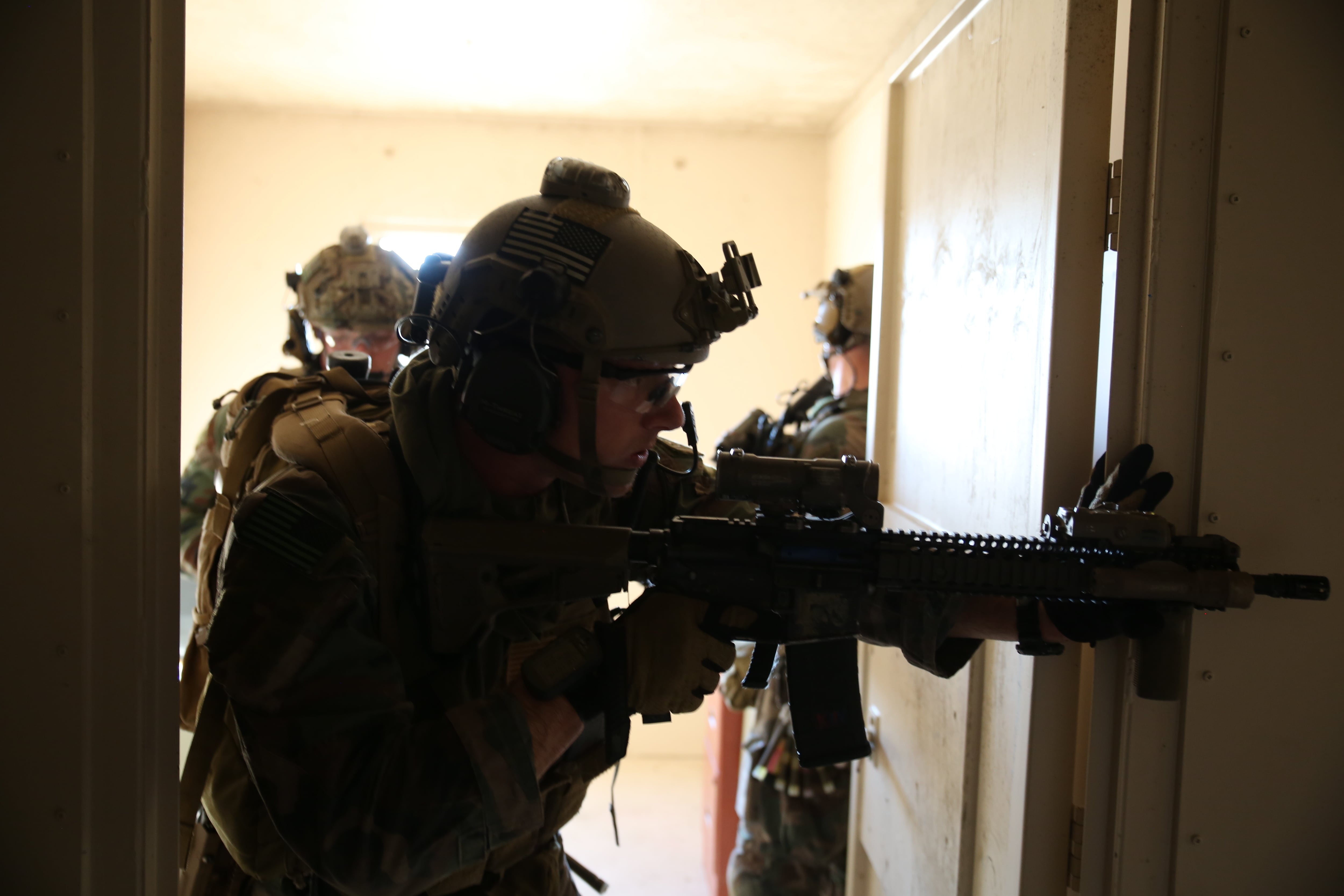The Corps has been slowly pushing a range of technology frequently employed by its elite special operators to its conventional forces. And now, Marines may be getting their hands on new headsets currently donned by its Raider community.
The Corps is looking at a range of headsets to help improve hearing protections and battlefield situational awareness, according to a request for information published by Marine Corps Systems Command in early September.
And the Corps says its planning to purchase between 7,000 and 65,000 of the headsets over the next few years.
“Marines have the earplugs and they do provide protection, but sometimes they choose not to wear them because they want to be aware of their surroundings at all times,” Steven Fontenot, project officer for Hearing, Eye Protection and Loadbearing Equipment at MARCORSYSCOM, said in a command release. “The new headset we want to acquire will allow Marines to wear hearing protection, yet still provide the opportunity to communicate and understand what is going on around them.”
Marine Raiders have been sporting Peltor headsets for several years now. The headsets provide hearing protection and enhanced situational awareness on the battlefield.

According to the RFI, the Corps wants its new headsets to fit the Enhanced Combat Helmet, or ECH, and be compatible with Marine Corps communications equipment.
But helmet cuts with the ECH could prove to be a potential spoiler for any new headset bore by conventional Marines. Elite Marine operators wear a high-cut helmet known as the Ops-Core which eases the fit of a multitude of large headsets and hearing protection.
But the Corps is amid plans to test a range of ECH helmet cuts to ensure the right fight with any new headsets procured by the Marines.
In May, the Marines ordered 97 mid-cut and 109 mid-cut and high-cut ECH helmets from Gentex Corp., the maker of the iconic Ops-Core helmets, in order to conduct an evaluation.
“The Marine Corps is buying a small quantity of mid cut and high cut helmets to conduct ballistic testing and limited user evaluations to develop a better understanding of the trade-offs between ballistic protection, situational awareness, and hearing system integration,” Barbara Hamby, a spokeswoman for MARCORSYSCOM, told Marine Corps Times in May. “For now, this is only a research and development effort.”
The Corps has already carried out some field testing on new potential headsets. In February, MARCORSYSOM issued about 220 headsets to infantry, artillery, reconnaissance and combat engineer Marines for a user evaluation, according to a command release. Recon Marines also tested the headsets under cold weather conditions in Norway.
“Marines wore the headsets throughout their regular training cycle to assess comfort and how well they integrated with the ECH,” said Fontenot in a command release. “We want to make sure the headset we acquire is rugged and capable of operating in a wide range of environments a Marine might encounter, from cold weather to extreme heat.”
The Corps says it may ultimately field a suite of hearing systems and Marines will get devices tailored to their needs and role, according to a command release.
Shawn Snow is the senior reporter for Marine Corps Times and a Marine Corps veteran.
